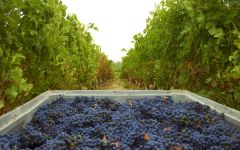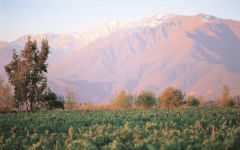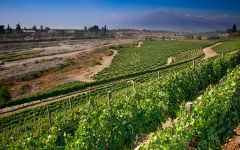Concha y Toro Marques de Casa Concha Cabernet Sauvignon 2003
-
Wine
Spectator -
Wine &
Spirits


Product Details
Your Rating
Somm Note
Winemaker Notes
-Wine Spectator
This Cabernet Sauvignon shows why Chile is becoming such a great region to find rich, expressive, and good value wines. Full of beautifully ripe berry fruit, spice, and cassis, this is the perfect "house red" - get it while you can.
Origin: Maipo Valley, Puente Alto Vineyard
Soil: Alluvial, stony, poor in nutrients and highly permeable due to the gravel sub-soil.
Aging: 14 months in one, two, and three years old French oak barrels, then aged for a further six months after bottling.
Color: Dark ruby red.
Bouquet: Fine red black currants and black plums; with hints of toasty french oak.
Taste: Appetizing; smooth, well-rounded and tasteful. Well balance, high fineness and long finish.
Enjoy With: Red meats, barbecue, cheese, pasta.
Professional Ratings
- Wine Spectator
- Wine & Spirits
Other Vintages
2021-
James
Suckling -
Robert
Parker
-
James
Suckling -
Wine &
Spirits
-
Robert
Parker -
Tasting
Panel - Vinous
-
James
Suckling -
Wilfred
Wong -
Robert
Parker
-
James
Suckling -
Wine
Spectator
-
James
Suckling
-
James
Suckling
-
James
Suckling
-
James
Suckling -
Robert
Parker
-
Wine
Spectator
-
Wine
Spectator -
James
Suckling -
Wine &
Spirits
-
Wine
Spectator
-
Wine
Enthusiast -
Wine &
Spirits -
Wine
Spectator
-
Wine &
Spirits -
Wine
Spectator -
Robert
Parker -
Wine
Enthusiast
-
Wine
Spectator -
Robert
Parker
-
Wine &
Spirits -
Wine
Spectator -
Wine
Enthusiast
-
Wine &
Spirits -
Wine
Spectator
-
Wine &
Spirits -
Wine
Spectator
-
Wine
Spectator -
Wine
Enthusiast
-
Wine
Enthusiast -
Wine &
Spirits
-
Wine
Spectator
-
Wine &
Spirits -
Wine
Spectator
-
Wine
Enthusiast
-
Wine
Spectator










Founded in 1883, Vina Concha y Toro is Latin America's leading producer and occupies an outstanding position among the world’s most important wine companies, currently exporting to 135 countries worldwide. Uniquely, it owns around 9,500 hectares of prime vineyards, which allows the company to secure the highest quality grapes for its wine production. Concha y Toro's portfolio includes a wide range of successful brands at every price point, from the top of the range Don Melchor and Almaviva to the flagship brand Casillero del Diablo and innovative stand-alone brands such as Palo Alto and Maycas del Limarí. The company has 3,162 employees and is headquartered in Santiago, Chile.
